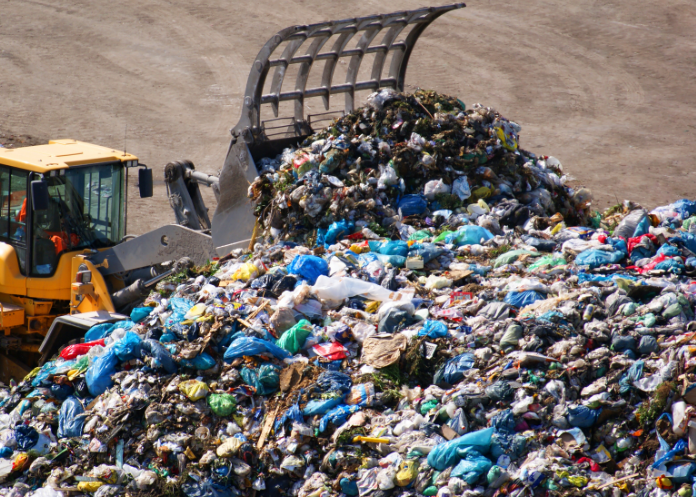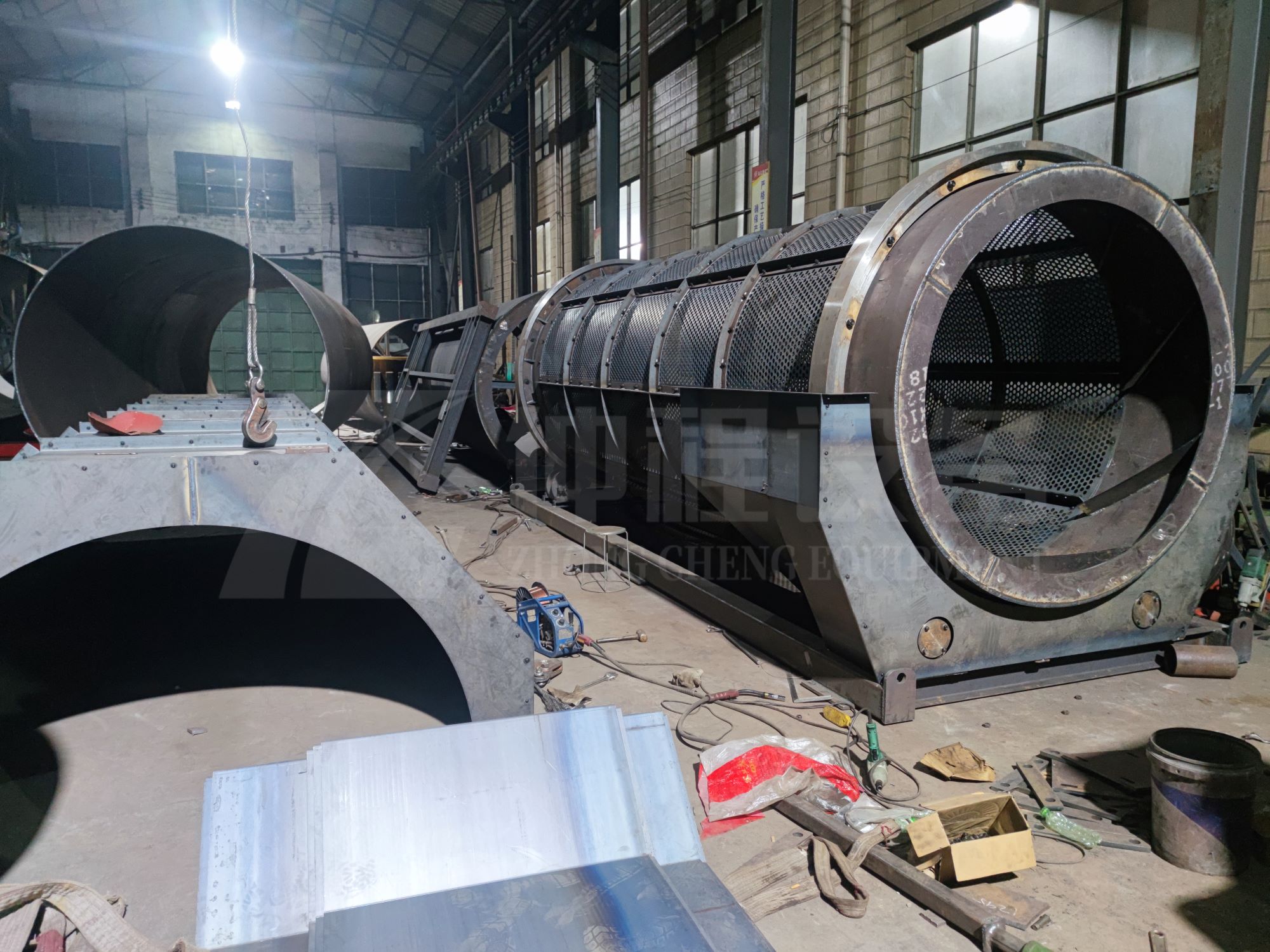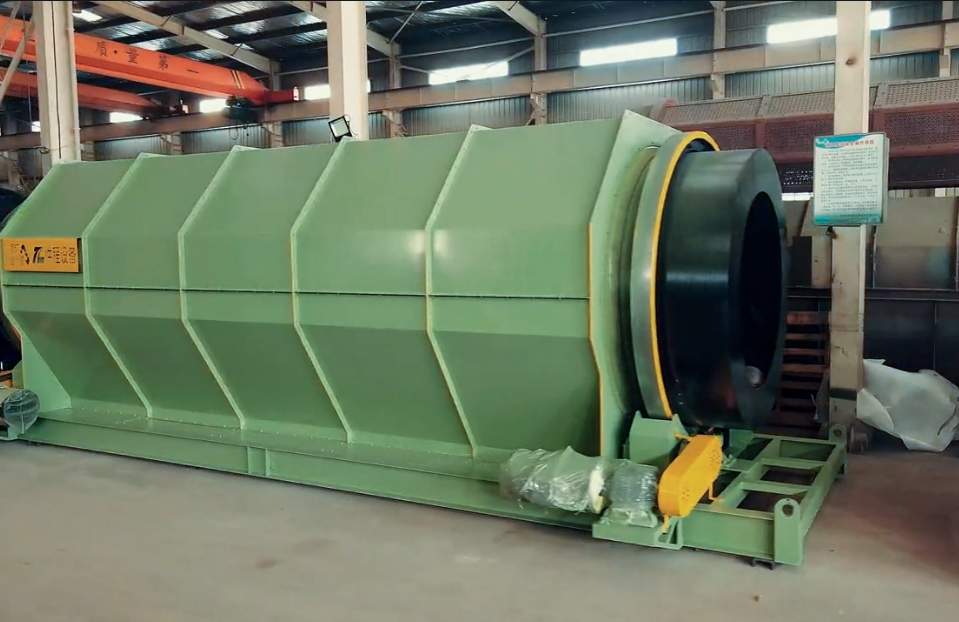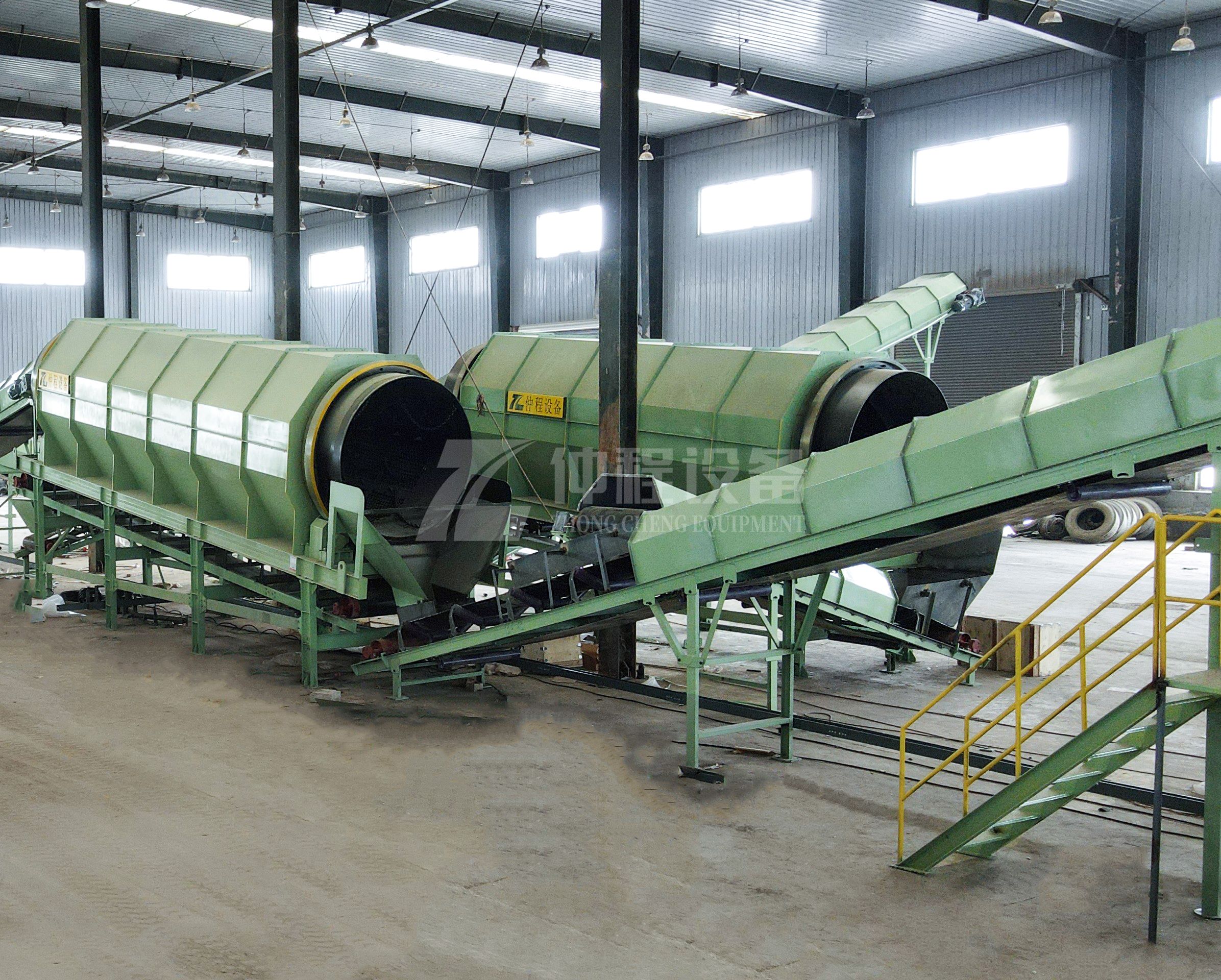Benefits of Using Trommel Screens in Waste Separation Processes
Introduction
In today’s waste management and recycling industries, efficiency and precision in material separation are critical to achieving sustainability goals, reducing operational costs, and improving product quality. One of the most effective machines for these processes is the trommel screen, a versatile waste sorting machine that can be used across various industries. From municipal solid waste (MSW) and construction debris to composting and recycling, trommel screens are renowned for their ability to handle large volumes of material and achieve highly accurate separation. In this article, we will explore the numerous benefits of implementing trommel screens in material separation processes, highlighting their advantages in terms of efficiency, product quality, cost savings, scalability, and environmental impact.

Increased Efficiency
One of the primary advantages of using trommel screens in waste separation is the significant increase in operational efficiency. Trommel screens use a rotating cylindrical drum with perforations of varying sizes to separate materials based on their size. As materials are fed into the drum, the rotating motion causes them to tumble, allowing smaller items to fall through the holes while larger materials continue through the length of the drum. This continuous sorting process eliminates the need for extensive manual intervention, drastically reducing the time and labor required for material separation.
In industries where processing speed is a key factor, such as in large-scale recycling or waste management plants, trommel screens help ensure that high volumes of material can be sorted quickly and accurately. The efficiency gained through automation leads to faster throughput and better resource allocation, allowing waste management companies to process more material in less time.
Improved Product Quality
The consistency and accuracy of material separation are critical in many waste processing applications, and trommel screens are highly effective in delivering high-quality results. Because trommel screens separate materials based on size, they provide a reliable method for creating uniform product categories. For example, in a composting facility, a trommel screen can efficiently separate fine compost from larger, unprocessed organic material, resulting in a cleaner, more usable final product.
Similarly, in the recycling industry, trommel screens help to ensure that sorted materials such as plastics, metals, and glass are free from contaminants or foreign objects. The ability to achieve such precise separation directly improves the quality of the final products, whether it be recyclables, compost, or other end-use materials. This leads to higher customer satisfaction and enhances the overall value of the processed material.

Cost Savings
Another key benefit of implementing trommel screens in waste separation processes is the potential for significant cost savings. One of the primary costs associated with material separation is labor, as manual sorting is time-consuming and expensive. Trommel screens help reduce this burden by automating the sorting process, minimizing the need for manual labor and freeing up workers for other tasks within the operation.
Additionally, the enhanced efficiency of trommel screens contributes to overall operational savings. By processing materials faster and more accurately, trommel screens reduce the need for multiple sorting stages, lowering energy consumption and maintenance costs. These savings can be passed on to the business in the form of increased profitability and lower operating expenses, making trommel screens a cost-effective investment for waste management companies.
Scalability
Trommel screens are highly scalable and can be easily integrated into existing waste management or recycling operations. Whether a company is processing small volumes of material or needs to handle large-scale operations, trommel screens can be adapted to meet growing processing needs. These machines come in various sizes, with drums featuring different perforation configurations to accommodate a wide range of material types and separation requirements.
As processing needs grow, businesses can expand their trommel screen setups to scale up their operations. For example, additional screens can be installed in series or parallel to increase sorting capacity, allowing companies to handle larger material volumes without a significant increase in operational complexity. This scalability makes trommel screens an ideal choice for companies looking to grow their waste sorting capabilities over time.

Environmental Impact
One of the most important advantages of using trommel screens in material separation is the positive environmental impact they offer. Efficient material separation is crucial to successful recycling efforts, as it ensures that valuable materials such as metals, plastics, and glass are recovered and diverted from landfills. Trommel screens play a key role in this process by providing high-precision separation, enabling recyclables to be sorted and processed more effectively.
In addition to supporting recycling efforts, trommel screens are also valuable in reducing the overall volume of waste that ends up in landfills. By separating organic materials for composting, these machines help reduce methane emissions from decomposing waste and promote the production of nutrient-rich compost that can be used in agriculture and landscaping. This contributes to a more sustainable waste management approach that conserves natural resources and reduces the environmental footprint of waste disposal.
Applications in Waste Sorting and Recycling
Trommel screens are widely used across different waste management sectors due to their versatility. In municipal solid waste (MSW) facilities, they help to separate compostable organic matter from non-compostable materials, improving the efficiency of waste processing. In construction and demolition (C&D) recycling, trommel screens can separate valuable materials like metals, aggregates, and reusable construction debris from waste. This enhances the recovery of resources that can be repurposed for new construction projects.
In composting operations, trommel screens are used to screen out fine compost, which can be sold as soil amendments, while larger organic materials are sent back for further decomposition. Trommel screens can also be used in mining, quarrying, and industrial applications to separate minerals, ores, and other bulk materials.

Conclusion
Trommel screens are an invaluable tool in modern waste management and recycling processes. By increasing efficiency, improving product quality, reducing costs, and contributing to a more sustainable environmental approach, trommel screens play a critical role in material separation processes. Their scalability allows businesses to adapt to changing needs, making them an ideal investment for companies seeking long-term growth and sustainability.
As waste management and recycling industries continue to evolve, the demand for efficient, cost-effective, and environmentally friendly sorting technologies will only increase. Trommel screens, with their proven benefits and adaptability, will remain at the forefront of these advancements, helping to shape the future of waste processing and resource recovery.
-
 Trommel screenTrommel screen, also known as drum screens, are widely used in various industries for sorting and separating materials.Get Quote
Trommel screenTrommel screen, also known as drum screens, are widely used in various industries for sorting and separating materials.Get Quote -
 Crop straw double shaft shreddApplications:Biomass Energy Production: Shredded straw can be used as a feedstock for bioenergy plants to produce electricity or heat.Livestock Feed: Reduced-si...Get Quote
Crop straw double shaft shreddApplications:Biomass Energy Production: Shredded straw can be used as a feedstock for bioenergy plants to produce electricity or heat.Livestock Feed: Reduced-si...Get Quote -
 Zhongcheng Air Drum SeparatorAir drum separators effectively separate lightweight materials (e.g., plastics, paper) from heavier materials (e.g., metals, glass). This high efficiency is cru...Get Quote
Zhongcheng Air Drum SeparatorAir drum separators effectively separate lightweight materials (e.g., plastics, paper) from heavier materials (e.g., metals, glass). This high efficiency is cru...Get Quote
-
2024-08-06Plastic double shaft shredderOperation:Feeding: The plastic material is fed into the shredder through the infeed system.Shredding: As the material enters the shredding chamber, the rotating...
-
2025-03-03Mini Copper Wire GranulatorThe copper wire granulator machine is a device specially used to process waste wires and cables. Its main function is to separate the copper and plastic in the ...
-
2023-01-13Bag OpenerBag opener or bag opener system is a mechanical device used to automatically open and empty bags containing bulk materials. This system is commonly used in indu...
-
2023-01-12Conveyor BeltGarbage conveyor/Trash conveyor belt system is a processing line to classify paper, plastic, metal, glass, and organic matter and realize the recycling of rubb...
-
2024-07-16Drum screen garbage processing machine for msw recyclingManaging municipal solid waste (MSW) efficiently is crucial for urban areas. Drum screen garbage processing machines are a game-changer in this field. They ensu...



